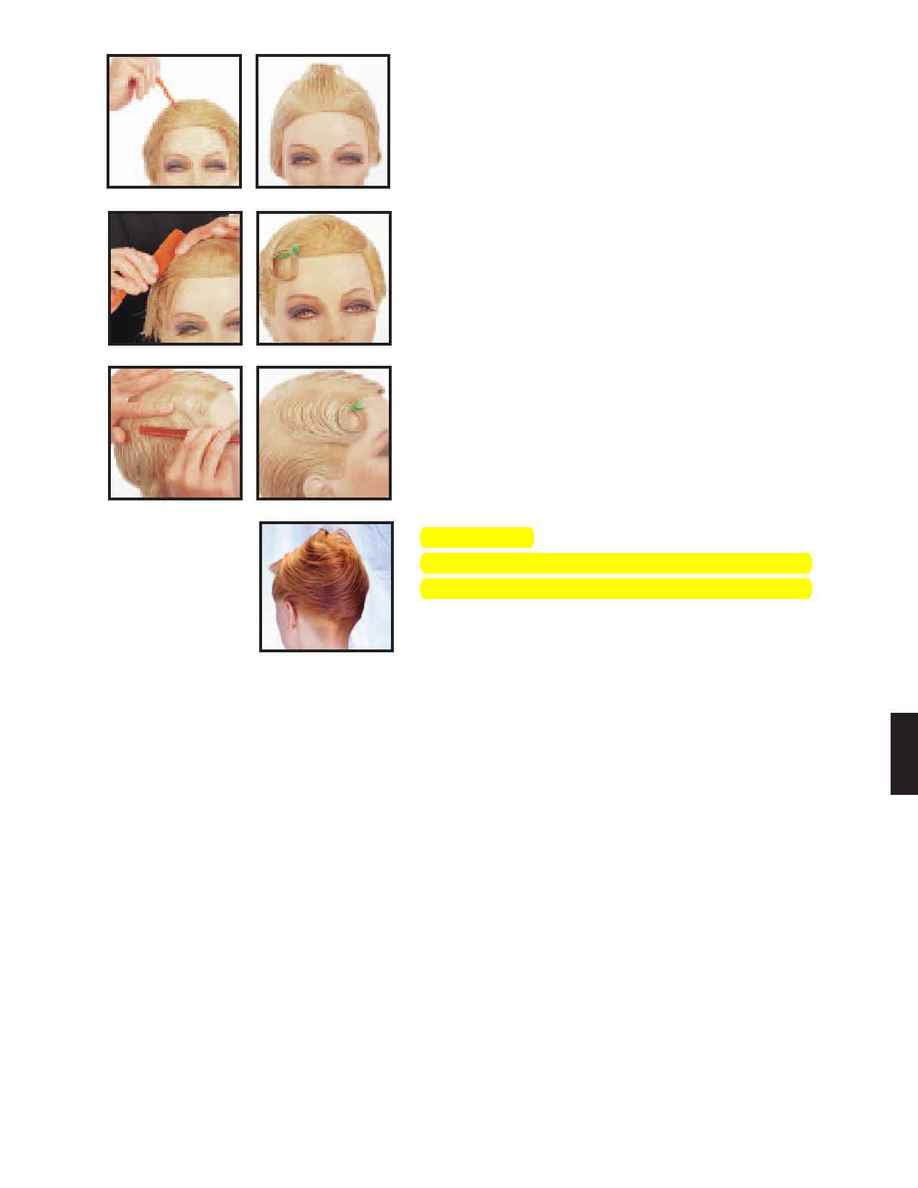
Here radial distribution is used to determine the posi-
tion for a triangular shape. Parallel distribution is then
used to distribute the hair within the triangle.
Radial distribution and a counterclockwise direction
are used to mold this circular movement.
Curved, parallel distribution is used in this example to
create an oblong shape.
Hair Wrapping
Molding or wrapping the hair around the head so the
finished hair style takes on the shape of the head.
Sectioning
After the hair is molded into the lines of the style, you will either let it dry or set it with tools. Before
beginning to set the hair, you'll need to subdivide the head into major areas or sections. Sectioning
the hair into workable areas allows you to have better control of the hair and to more carefully plan
your design. Sections that you are not working on are pinned or clipped out of the way until you
are ready to work with them. Note that sections may or may not relate to molded patterns. There-
fore, larger sections may be molded and then subdivided into subsections. The process of section-
ing is related to the intended design and the shape of the client's head. It also takes natural growth
patterns into consideration. Sections will very often take the form of geometric shapes. Some of
the geometric shapes that might be used to section the head into workable areas are: circles (or
parts of a circle), oblongs, rectangles, squares, triangles and trapezoids.
Some shapes dictate that specific distribution patterns be used. For instance, a circle requires the use
of radial distribution. Oblongs are created using parallel curved distribution. Triangles and squares,
on the other hand, can be used with radial or parallel distribution. It is important to remember that
an entire design or hairstyle will always be composed of some combination of shapes. How you
choose to fit the `pieces of the puzzle' together will determine how well the finished style works.
317
1
0
HAIRSTYLING
